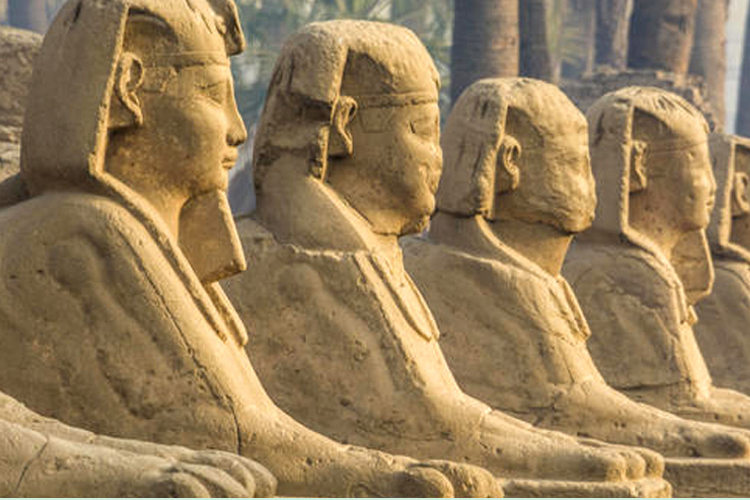| The sacred road, once named "The Path of
God," connects the Temples of Karnak in the north with Luxor in the south.
Paved in sandstone blocks, the 1.7 mile (3 kilometer) long road is lined on both sides with
more than 1,050 statues of sphinxes and rams. They've spent centuries buried
under the desert sands, but slowly, over many years, Egypt's renowned
archaeologists are bringing them back into the light of day. So far 309 statues have been excavated in good condition, but that number may increase as excavation work. |
|
Parade route |
| Every year, ancient Egyptians would hold a festival called "Opet" in the second month of the Nile flooding season to celebrate the fertility of the gods and the pharaoh. Priests would carry three divine boats on their shoulders, transporting statues of the Theban Triad — the deities of Amun-Re, his consort Mut and their son Khonsu — from Karnak to Luxor. The trip was made by foot along the Avenue of Sphinxes, or sometimes by boat along the Nile River. The festival lasted from days to weeks depending on the ruler at the time, and then the statues were carried back to Karnak. Over time the road was abandoned and buried under the sand. But in 1949, the first eight sphinx statues were discovered in front of the Luxor Temple by an Egyptian archaeologist The excavations have continued for years, on and off, as archaeologists uncover and map the ancient road. They've had to demolish some buildings, including mosques, a church and many homes, that sprung up along the route over the ensuing millennia. The government organized Thursday's ceremony on the same scale to promote the city of Luxor as one of the largest open museums in the world. The event tried to recreate the spirit of the ancient Opet festival, and included music, dancing and light shows |




